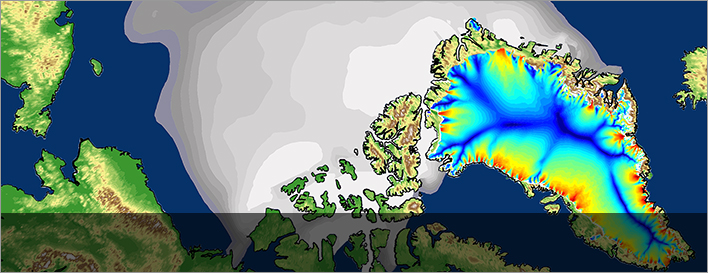Dr. Elinor Martin


Dr. Elinor Martin, assistant professor of meteorology at University of Oklahoma, is a member of the OK NSF EPSCoR Track-1 RII Award titled Socially Sustainable Solutions for Water, Carbon, and Infrastructure Resilience in Oklahoma. The $20 million research project is a social science-led, multi-disciplinary collaboration among social, physical, biological, engineering, and computational scientists. More than thirty researchers from across the state are working together on the project, which began July 1, 2020.
Dr. Martin's research focuses on furthering our knowledge of climate, climate variability and weather-climate interactions, with a focus on rainfall, through the use of observations and model simulation.
- Variability of precipitation at multiple scales
- Interaction of weather and climate
- Representation of climate variability and change in climate models
- Caribbean and African precipitation variability and change
Dr. Martin's work on the OK NSF EPSCoR project addresses Focus Area 1: Changing Subseasonal to Seasonal (S2S) Weather Patterns. Change in both natural and human systems in Oklahoma is being driven by rapidly changing patterns of subseasonal to seasonal weather. These fluctuations include shifts in average and extreme precipitation and temperature on scales of 10-90 days. Changes are occurring in the context of competing social narratives of human activities' effect on climate, complicating recognition of and response to changing S2S patterns. Through her work with the S2S team, Dr. Martin will seek to (a) better understand the basic processes driving changes in S2S patterns, (b) improve models and predictions of basic S2S process and events; and (c) develop data necessary for managing water, carbon and water cycles, and infrastructure in Oklahoma.
- Flanagan, P.X., J.B. Basara, J.C. Furtado, E.R. Martin, and X. Xiao. 2019. Role of Pacific Sea Surface Temperatures in United States Great Plains Pluvial Years. J. Climate. (In Press).
- Martin, E.R. 2018. Future Projections of Global Pluvial and Drought Event Characteristics. Geophysical Research Letters. 45:11913-11920. https://doi.org/10.1029/2018GL079807.
- Hu, X., M. Xue, R.A. McPherson, E.R. Martin, D.H. Rosendahl, L. Qiao. 2018. Improvement of Precipitation Dynamical Downscaling over the Great Plains and its Hydrological Application. J. of Advances in Modeling Earth Systems, 10. https://doi.org/10.1002/2017MS001154.
- Danco, J.F., and E.R. Martin. 2017. Understanding the Features and Mechanisms of the Great Plains Low-level Jet in CMIP5 Models. Climate Dynamics. 51:1537-1558. https://doi.org/10.1007/s00382-017-3970-9.
- Brannan, A.L., and Martin, E.R. 2018. Future Characteristics of African Easterly Wave Tracks. Climate Dynamics. https://doi.org/10.1007/s00382-018-4465-z.
- Martin, E. R., and C. Thorncroft. 2014. Sahel Rainfall in Multimodel CMIP5 Decadal Hindcasts. Geophys. Res. Lett. 41:2169–2175. http://dx.doi.org/10.1002/2014GL059338.
- Martin, E. R., C. Thorncroft and B.B.B. Booth. 2014. The Multidecadal Atlantic SST - Sahel Rainfall Teleconnection in CMIP5 Simulations. J. Climate. 27:784-806. http://dx.doi.org/10.1175/JCLI-D-13-00242.1.
- Martin, E. R., and C. Schumacher. 2012. The Relationship between Warm Pool Precipitation, Sea Surface Temperature, and Large-scale Vertical Motion in IPCC AR4 Models. J. Atmos. Sci. 69:185-194. http://dx.doi.org/10.1175/JAS-D-11-0104.1.
- Martin, E. R., and C. Schumacher. 2011. Modulation of Caribbean Precipitation by the Madden-Julian Oscillation. J. Climate. 24:813-824. http://dx.doi.org/10.1175/2010JCLI3773.1.
- Martin, E. R., and R. H. Johnson. 2008. An Observational and Modeling Study of an Atmospheric Internal Bore during NAME 2004. Mon. Wea. Rev. 136:4150–4167. https://doi.org/10.1175/2008MWR2486.1.
